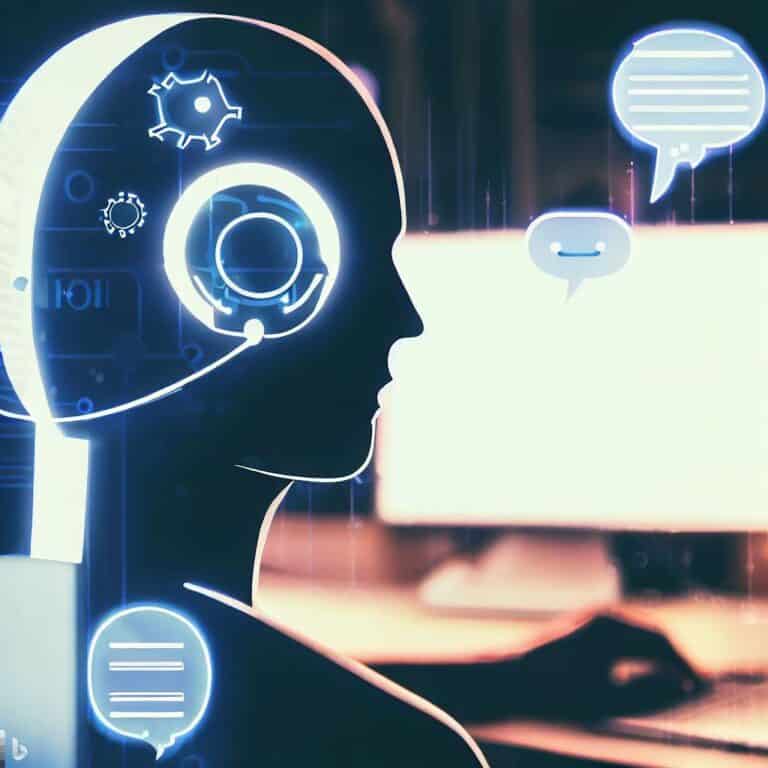AI and Automation in Customer Service: Enhancing Experience with Technology
Artificial Intelligence (AI) is revolutionizing countless industries, and customer service is no exception. As companies strive to meet rising customer expectations, they’re increasingly turning to AI and automation to enhance the customer experience. These technologies are not just futuristic concepts but practical tools that are already being integrated into customer service strategies. AI can streamline workflows, allowing customer service agents to focus on more complex issues while automated systems handle routine inquiries.
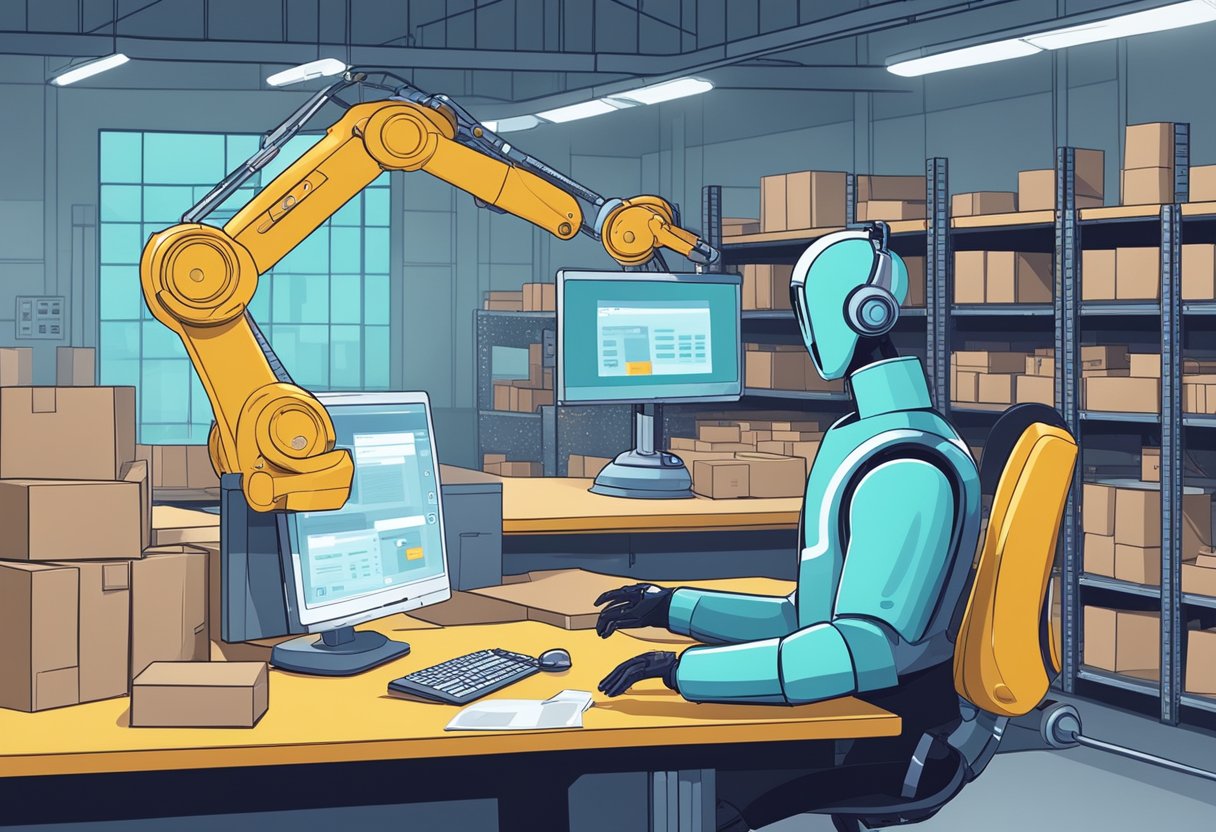
The use of AI in customer service spans various applications, from chatbots that provide instant responses to common questions to support ticket sorters that ensure queries are routed to the appropriate departments swiftly. These advancements are reshaping the landscape of customer interactions, offering personalized, efficient service around the clock. Automation within customer service isn’t limited to chatbots; it also includes tools for tracking orders, checking account balances, or helping with password resets. Through this automation, businesses are seeing improved response times, which in turn contributes to higher satisfaction and increased customer loyalty.
While some worry that automation might depersonalize customer service, the objective is quite the opposite. AI is paving the way for more customized experiences by rapidly gathering and analyzing data, thus enabling service teams to anticipate needs and resolve issues before they escalate. With these technologies, businesses are not only optimizing their operations but also deepening their understanding of customer needs, leading to stronger relationships between companies and their clients.
Evolution of Customer Service
The landscape of customer service has shifted dramatically with the advent of advanced technology, altering not only how companies interact with customers but fundamentally transforming customer expectations.
From Manual to AI-Driven Support
In the past decade, customer service transitioned from primarily manual operations to AI-driven support systems. Companies utilized AI technologies to decipher vast amounts of data, automating responses and offering personalized service at scale.
- Traditional phone-based support and face-to-face interactions have seen a significant decline.
- Chatbots and automated response systems handle routine inquiries, allowing human representatives to tackle more complex issues.
The integration of AI into customer service roles not only enhances efficiency but also improves the accuracy of help provided.
Anticipating the Future: 2030 and Beyond
Looking toward 2030, experts anticipate further advancements in technology and shifts in customer behavior, leading to an era where customer engagement is predominantly driven by predictive AI.
- AI systems will likely predict customer needs before they’re explicitly expressed, offering solutions in anticipation.
- The rise of personalized virtual assistants that understand individual preferences and habits is expected.
This proactive approach aims to strengthen customer engagement, creating seamless and anticipatory customer experiences that meet evolving expectations.
AI and Machine Learning Foundations
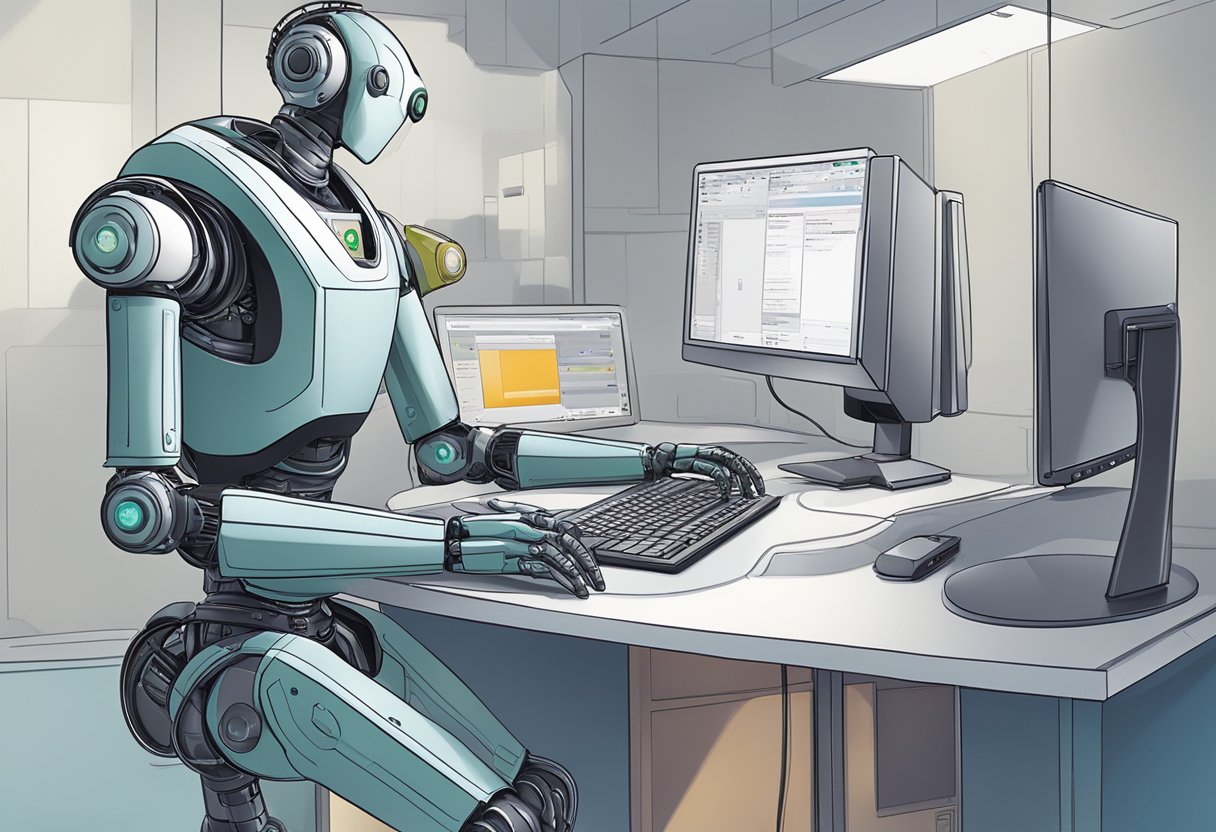
AI and machine learning are at the heart of modern customer service innovations, transforming vast amounts of customer data into actionable insights.
How AI Interprets Customer Data
AI excels at processing and interpreting customer data. It sifts through data looking for patterns and anomalies. For instance, sentiment analysis uses AI to detect the tone of a customer’s message—whether they’re feeling happy, frustrated, or disappointed. This powerful tool allows businesses to tailor their services to the emotional state of the customer, ensuring a more sensitive and targeted customer service experience.
Machine Learning in Understanding Behaviors
Machine learning goes hand-in-hand with AI to provide an even deeper understanding of customer behaviors. It looks at things like purchase history and interaction logs to anticipate future needs or issues. This proactive aspect of customer service is what sets apart businesses that leverage machine learning; they’re not just reacting, but predicting and acting to meet customer needs before they arise.
Automation Tools and Workflows
In customer service, automation tools and workflows are game-changers, boosting both efficiency and productivity. They take care of the mundane, letting service reps focus on more complex tasks.
Streamlining Customer Service Tasks
Automation tools are essential in streamlining customer service tasks. For instance, AI-powered chatbots can handle a high volume of routine inquiries, providing instant responses that customers appreciate. Utilizing tools like support ticket sorters helps in categorizing and prioritizing issues effectively.
- Key Benefits:
- Reduced Response Time: Automation ensures that customer inquiries are dealt with promptly.
- Consistency: Each customer receives the same level of service quality.
- Scalability: Systems can handle a growing number of requests without compromising on service.
Integrating AI with Existing Workflows
The integration of AI with existing workflows promises seamless customer service experiences. By plugging AI into customer relationship management (CRM) systems, businesses witness a synergy that drives consistent, high-quality customer interactions. Salesforce’s guide indicates the importance of connecting workflows across departments for resolving issues efficiently.
- Advantages of Integration:
- Automated Follow-Ups: Personalized, automated follow-ups keep customers engaged and informed.
- Knowledge Base Guidance: AI nudges customers towards helpful resources, reducing the workload on human agents.
By incorporating these tools, companies redefine customer service, meeting the modern customer’s expectations for rapid and reliable support.
Improving Customer Interactions
Artificial Intelligence (AI) is significantly enhancing the way brands communicate with customers. By deploying AI-powered tools such as chatbots and interactive voice response systems, companies are able to offer more sophisticated, responsive, and personalized customer service experiences.
The Role of Chatbots and IVR
Chatbots are becoming integral to customer service strategies for their ability to handle a high volume of requests simultaneously. Chatbots leverage conversational AI to interpret and respond to customer queries, providing immediate assistance. For instance, chatbots can check an order’s status, reset passwords, or even guide a customer through a troubleshooting process. They’re constantly learning from interactions, which means over time they get better at predicting and resolving issues.
Interactive Voice Response (IVR) systems have been around for quite some time but have recently been revolutionized by AI. Traditional IVR systems might have frustrated customers with endless button-pressing sequences, but now they use natural language processing to understand spoken requests. Customers can speak naturally, and the IVR system navigates them to the correct solution or service representative.
Live Support Augmented by AI
AI doesn’t just improve automated systems; it also enhances live customer interactions. Live support personnel benefit from AI through tools that analyze customer tone, sentiment, and previous interactions to offer more personalized assistance. These insights help service agents to be more efficient in their responses and improve agent efficiency overall.
By having customer information and suggested solutions at their fingertips, live support agents can resolve issues more effectively, often during the first interaction. This immediacy contributes to a more pleasant customer experience, reinforcing customer loyalty and satisfaction.
Personalization at Scale

Leveraging artificial intelligence, businesses are delivering personalized experiences to customers by effectively scaling their operations. This not only fosters stronger B2C relationships but also drives higher customer satisfaction.
Creating Personalized Experiences
Personalization isn’t just about addressing a customer by name; it’s a strategic approach to provide tailored experiences that resonate with individual preferences. With AI’s ability to analyze vast data sets, companies can offer personalized recommendations, much like a digital concierge, enhancing the shopping journey and potentially increasing cross-sell and upsell opportunities.
AI’s Impact on B2C Relationships
AI plays a pivotal role in transforming B2C relationships by predicting customer needs and providing relevant support at the right time. Customer satisfaction soars when consumers feel understood and valued, which is precisely the goal of AI-driven personalization strategies. Through these intelligent systems, businesses can maintain a 24/7 presence, ensuring that personalization doesn’t sleep.
Customer Service Automation Benefits
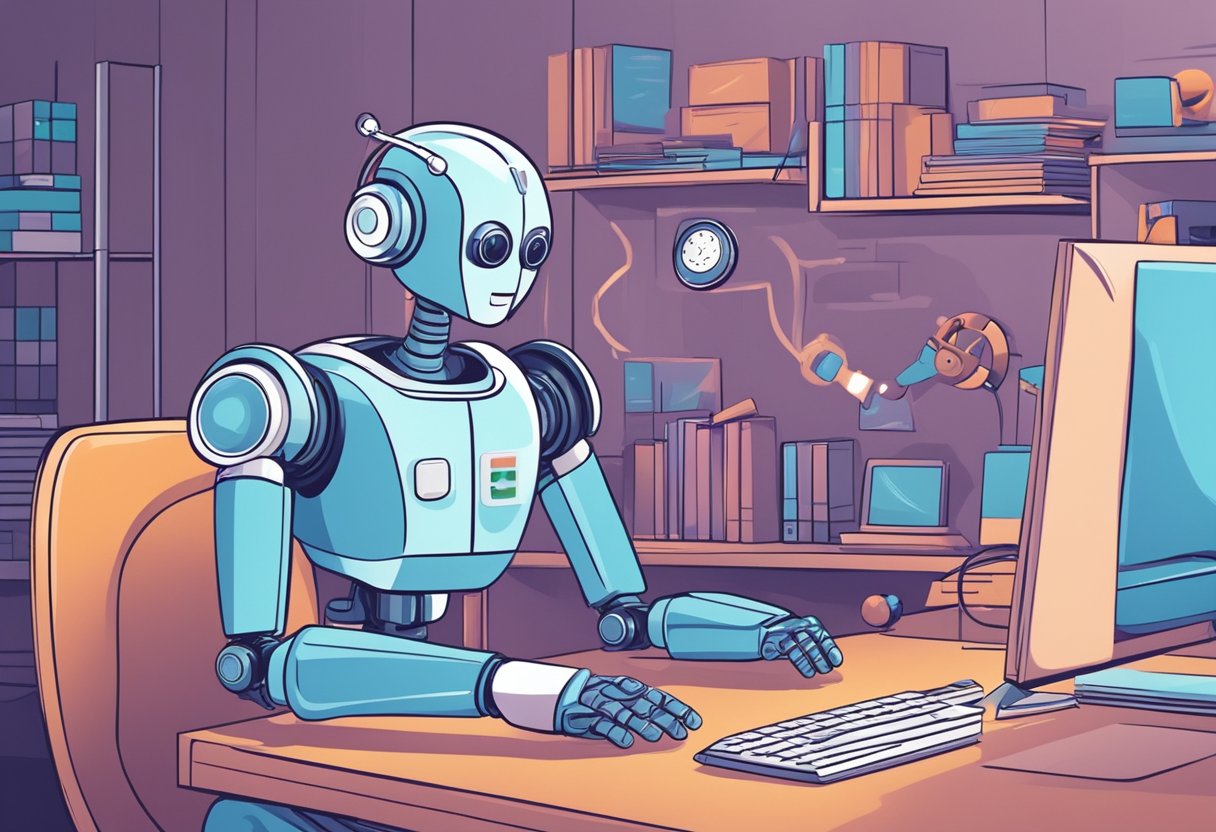
In the realm of customer service, automation stands as a game-changer. It’s all about boosting efficiency and satisfaction while keeping an eye on the budget through cost reduction and timely savings.
Enhancing Efficiency and Satisfaction
Automation is key to streamlining customer service processes. AI-powered tools, such as support ticket sorters and chatbots, are revolutionizing the way inquiries are handled. They’re fast, they don’t get tired, and they’re available around the clock. This leads to significant improvements in efficiency.
- Tools process requests swiftly, reducing wait times and increasing the number of queries handled.
- Chatbots provide instant responses to common questions, allowing human agents to focus on more complex issues.
Customer satisfaction sees a boost as services become more responsive. 24/7 accessibility ensures that help is just a click away, no matter the hour. This consistency in service availability greatly enhances the customer experience.
Cost Reduction and Time Savings
Cost reduction and time savings go hand in hand with automation. By optimizing workflows and minimizing the need for extensive human intervention, companies see a decrease in operational costs.
- Automated systems cut down on the labor needed for customer service management.
- AI helps in automating repetitive tasks, freeing up human agents’ time for tasks that require a personal touch.
Additionally, time savings are substantial with automation. Companies that invest in AI and automation technologies tend to witness a shrinkage in the average handling time for customer requests. This not only saves time for the customer but also for the company, allowing them to serve more customers efficiently.
Proactive Engagement Strategies

In customer service, shifting from a reactive to a proactive strategy often means harnessing the power of predictive AI to anticipate customer needs and address them before the customer has to reach out.
Utilizing Predictive AI
Predictive AI helps customer service teams to detect patterns, forecast issues, and offer solutions before customers encounter a problem. For example, AI can analyze customer behavior and usage data to identify signals, like an uptick in service use or common errors that precede customer complaints. Personalization is also enhanced by AI, as it can tailor communications based on individual customer sentiment and past interactions, ensuring messages resonate more effectively.
Proactive vs. Reactive Service Models
A proactive service model seeks to prevent issues before they arise, providing a frictionless customer experience. This differs from a reactive model, where the response only occurs after a customer reports a problem. Companies utilizing proactive strategies often see improved customer engagement, as they can address potential pain points early on and build customer loyalty through exceptional service experiences. Predictive AI is central to this, as it provides the analytics necessary to understand and act on customer needs in advance.
Challenges and Considerations

When integrating AI into customer service, companies face a mix of hurdles such as addressing customer concerns effectively and handling sensitive data responsibly, while striving to maintain high levels of accuracy and personalization.
Handling Customer Concerns with AI
In the realm of customer support, AI systems are often the first point of contact. These systems need to be designed thoughtfully to provide personalized service, as a generic or irrelevant response can frustrate customers. They must be capable of interpreting the intent behind customer inquiries accurately and determining when human intervention is necessary. For example, according to HubSpot, AI tools that collect and analyze customer feedback are essential in improving the customer experience.
Accuracy and Privacy Issues
Accuracy is pivotal in AI-assisted customer service, as inaccurate information can negatively impact customer trust. Additionally, privacy concerns with handling customer data are of paramount importance. Customers expect their information to be treated with the utmost care, necessitating robust data protection measures. AI systems must comply with privacy regulations like GDPR and only use customer data to enhance the support experience, without compromising privacy. Missteps in either accuracy or privacy can lead to significant issues for businesses.
Impact on Customer Service Teams

Integrating AI and automation within customer service fundamentally reshapes the duties and work environment for support teams. It presents an opportunity to mitigate stress while demanding new skills and ways of working.
Reducing Burnout with Automation
The introduction of AI into customer support has led to offloading repetitive tasks, which reduces burnout among service team members. Agents can now focus on more complex and human-centric interactions, as AI handles queries like password resets or account balances. The Forbes article notes that with AI picking up the mundane tasks, customer service teams can concentrate on issues requiring human empathy and problem-solving skills.
Upskilling for the AI Era
As automation takes care of routine enquiries, customer service workers are upskilling to keep pace with the technology. Employees are learning to work alongside AI tools to provide personalized support, thus elevating the customer experience. Investment in workforce training is critical, as noted by McKinsey, because AI’s potential can only be harnessed when employees are competent in using these new tools effectively. This is referenced in their article on AI-enabled customer engagement.
Technological Innovations and Case Studies
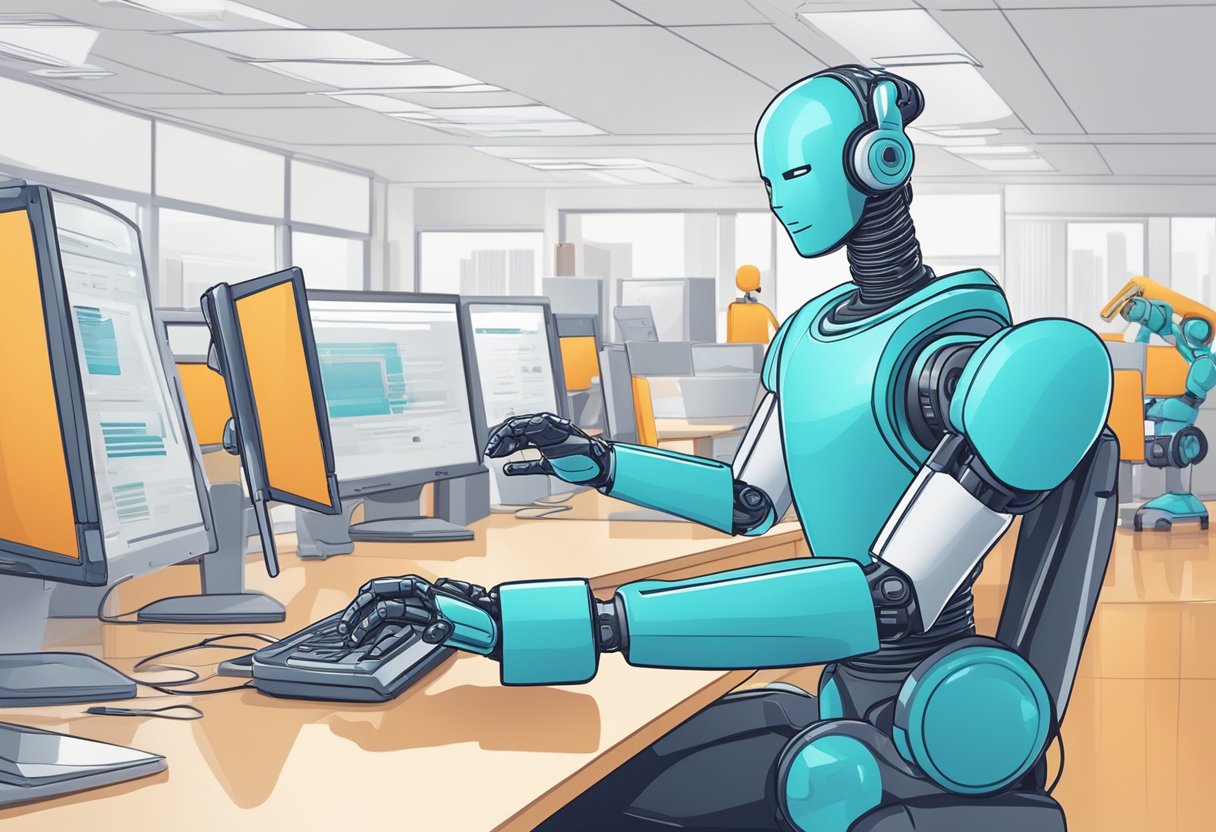
Innovations in AI and automation within customer service have not only transformed how businesses interact with their customers but also how they leverage data to make those interactions more efficient and personalized. The application of natural language processing and sophisticated algorithms enables a more intuitive experience. Here are a couple of case studies that illustrate this transformation.
HubSpot’s ChatSpot and Netflix’s Recommendations
HubSpot’s ChatSpot utilizes natural language processing to give users instant, valuable interactions. This virtual assistant can interpret a customer’s request and deliver relevant information without human intervention, paving the way for businesses to scale their customer service operations.
On the other hand, Netflix has set a high bar for content recommendation systems, which is a crucial touchpoint for customer engagement. Their software analyzes vast amounts of data to suggest shows and movies to users, keeping them engaged and subscribed. Netflix’s recommendation system is a prime example of AI’s ability to harness and apply trusted CRM data to enhance user experience.
Salesforce Einstein and CRM Integration
Salesforce is a leader in the CRM marketplace, and with the introduction of Einstein, their AI-driven tool, they’ve redefined what it means to have a smart CRM. Einstein CoPilot offers business leaders insights and automation like never before, integrating seamlessly with the existing Salesforce software to simplify tasks using AI-driven analytics.
Through such tools, companies can expect not just a collection of data, but a suite of actionable insights that allow for smarter decision-making and a more nuanced understanding of the customer base, leading to more tailored and timely customer service solutions.
Optimizing Customer Service for Mobile
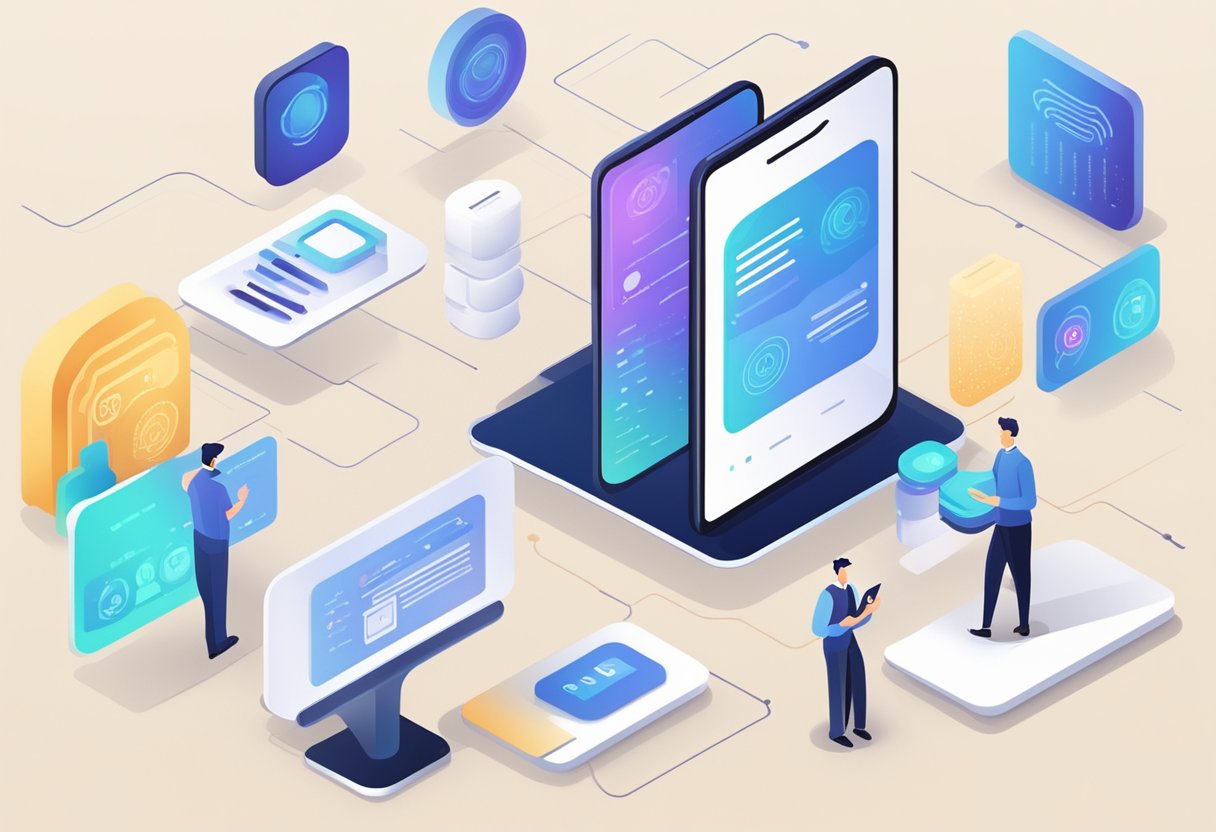
In an age where smartphones are ubiquitous, companies are rapidly adapting their customer service strategies to cater to a higher standard of mobile experiences. They prioritize convenience and personalization, fully leveraging mobile apps and multilingual support.
The Significance of Multilingual Support
Multilinguistic features in mobile apps open doors to a broader audience, making the customer service experience accessible and personalized. By embedding AI-driven translation services, businesses ensure that user interfaces and support tools are not just in one language but many. This allows users from different language backgrounds to navigate the app with ease and get support in their native tongue. It’s not just about translating text; it’s about cultural localization to resonate with diverse user bases.
Developing AI-Powered Mobile Applications
Mobile apps equipped with AI capabilities take customer service to new heights. These applications can offer tailored recommendations and instant support through AI chatbots. They actively learn from user interactions to offer a more personalized experience over time. The integration of AI technologies can also streamline processes like support ticket organization, which allows customer queries to be addressed more efficiently, giving them a smoother service experience.
Frequently Asked Questions
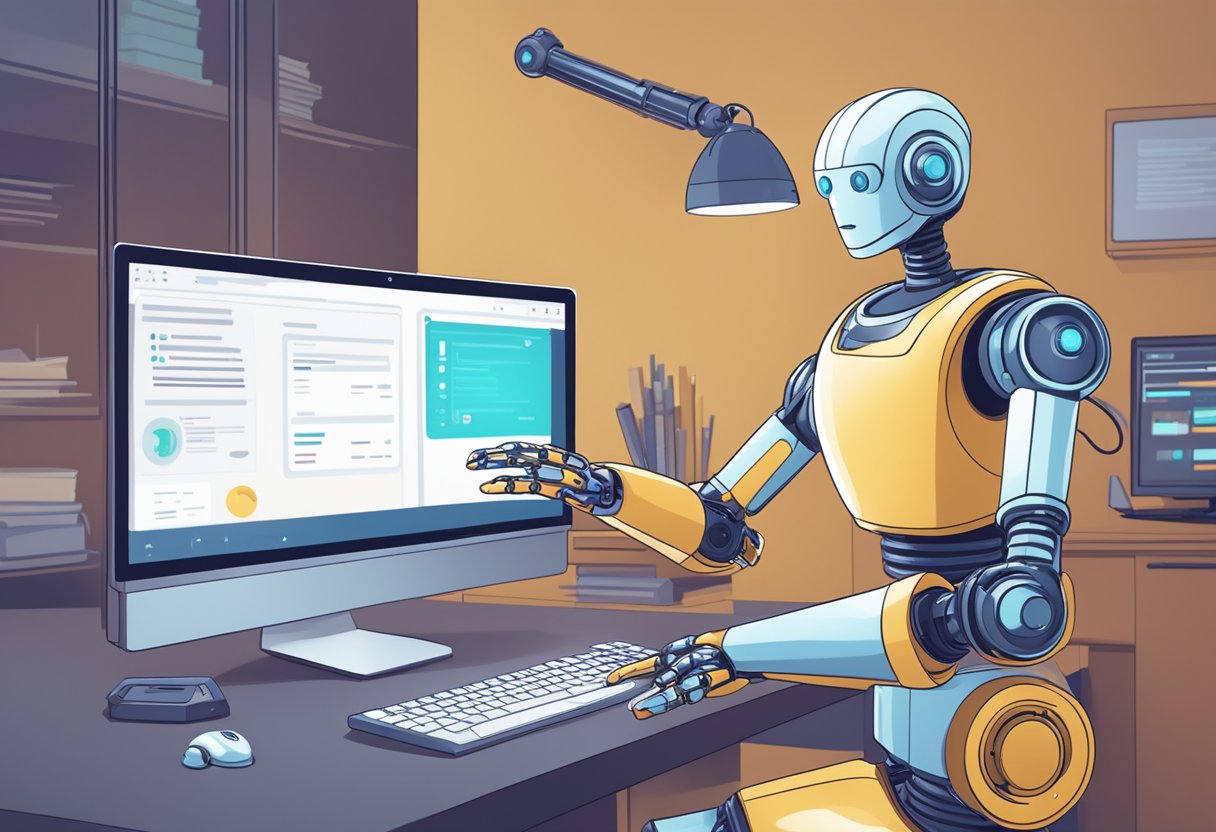
The integration of AI into customer service has reshaped the way companies engage with their customers. This section answers common questions about real-world applications, benefits, challenges, and future prospects of AI within customer service.
What are some real-world examples of AI being used in customer support?
AI is actively transforming customer support through chatbots that handle common questions and virtual assistants providing multilingual support. Companies employ AI to streamline inquiries, direct customers to relevant information, and even handle transactions without human intervention.
How can AI enhance the overall customer experience?
By leveraging AI, businesses can offer more personalized and strategic support. AI’s ability to analyze large volumes of data enables more proactive and human-like interactions, leading to improvements in customer satisfaction and engagement.
What are the main benefits of integrating AI into customer service processes?
Companies integrating AI into their customer service can experience a range of benefits, including increased efficiency and the ability to free up human agents to handle complex issues, ultimately reducing wait times and improving resolution rates.
What are the potential drawbacks of utilizing AI for customer service?
While AI can offer many advantages, it’s important to consider the potential drawbacks. Issues can arise such as lack of empathy in customer interactions and potential customer frustration if AI cannot understand or solve complex issues.
Can you name some companies that have successfully implemented AI in their customer service?
Many companies have successfully integrated AI into their customer service. For instance, organizations showcased by Qualtrics use virtual assistants to improve customer opinions and enhance support.
What does the future look like for AI and automation in the realm of customer service?
The future of AI in customer service looks promising, with technologies advancing to deliver enhanced B2C and B2B experiences. Continuous innovation may result in AI providing increasingly sophisticated forms of customer support.



